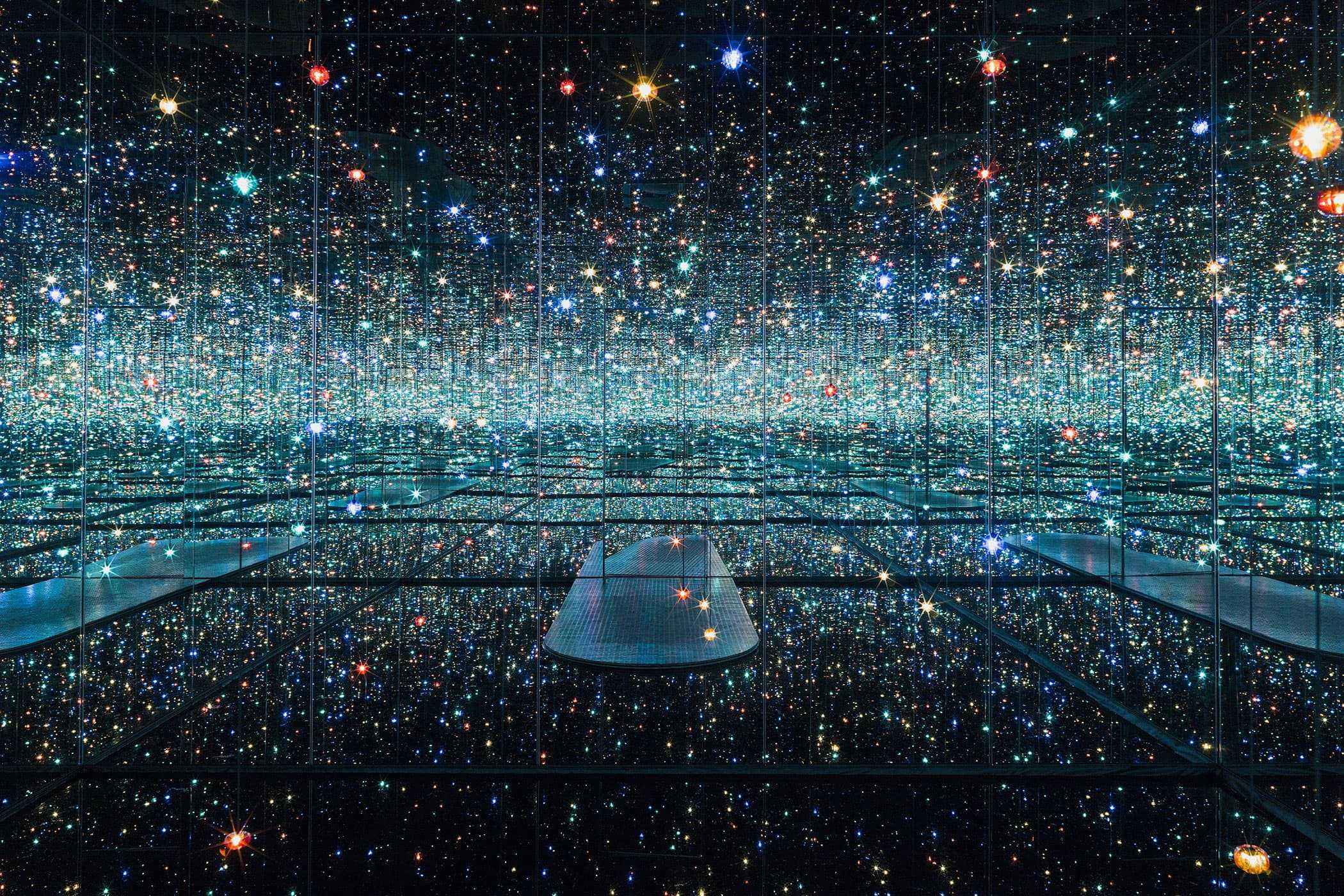Stepping into the infinity mirrored rooms of Yayoi Kusama is nothing short of a transcendental experience—which is exactly what the Japanese artist intended.
Pumpkins and polka dots and phallic-looking tubers: acclaimed Japanese rebel-artist Yayoi Kusama’s latest exhibition transfers you into a wacky alter-universe that spans the breadth of her six-decade-plus artistic career. And it’s never been so fun. Or weird. From peep-holes revealing a kaleidoscopic world of light to giant mirrored rooms in which the viewer becomes part of the work themselves, her whimsy and artistic prowess that established her as one of the ’60s top avant-garde icons remain intact.
“I wanted to start a revolution, using art to build the sort of society I myself envisioned,” says the artist, now in her eighties. Noting the lines that wrap around the block to get into the exhibit, day after day after day, it’s clear the revolution has started. Lucky art lovers in six cities—Washington, D.C., Seattle, Los Angeles, Toronto, Cleveland, and Atlanta—between 2017 and 2019 have the chance to experience this extraordinary artistic rebellion. Here’s a preview.





